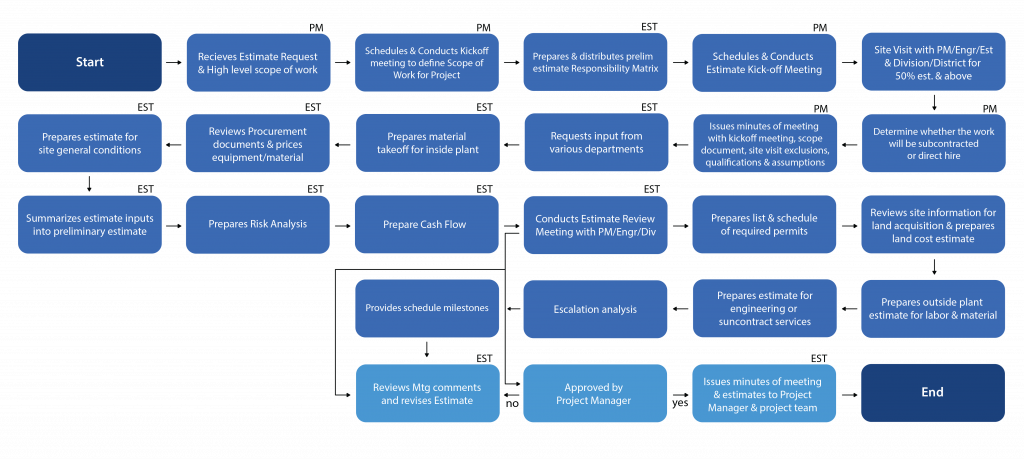Bruce Stephan is a nationally recognized licensed civil engineer with extensive experience on complex medium, large, and mega engineering and construction projects. His distinguished career spans public service, general contracting, and consulting nationally and internationally. He remains actively involved in managing construction programs.
What is the difference between infrastructure management and construction management?
While construction management is essential for infrastructure projects, infrastructure management focuses on capital asset management and program and project funding. A significant difference in public works is the tendency to have more claims due to a low-bid environment. Infrastructure construction tends to be more horizontal and generally involves roads, bridges, tunnels, subways, water, and other utilities.
Public projects are exciting and challenging due to multiple agency interactions, their importance and impact on the general population, and the need to maintain existing services while renovating aging infrastructure.

What are the biggest challenges of infrastructure project management?
The biggest challenge is indecisiveness. On public works projects, numerous stakeholders are involved, and each must make many decisions that affect the project. On design-build projects, decision-making is even more intense since the contractor does the design and needs to resolve issues quickly.
When a project is in construction, change orders occur, and the owner has to decide if a change will be accepted. Those decisions often involve many people, and lengthy decision-making can cause a project to linger for years. Private projects don’t seem to encounter those same issues or suffer from these types of delays.
Scope creep is the second biggest problem. Not locking down design and finalizing cost estimates are significant causes of project delays and cost overruns.
How can we improve infrastructure project management efficiency?
Simply stated, put processes, procedures, and software in place that get information to decision-makers as early as possible. I recommend enforcing procedures using ISO 9000 concepts. ISO 9000 requires a compliance mechanism that ensures procedures are followed. Ongoing oversight identifies non-compliance and corrective action is implemented at the program level when staff aren’t observing procedures.
I’ve seen this work on an infrastructure program in the Bay Area. The client had project management software in place for agency senior managers that identified when procedures were not being followed. Using data and procedures to hold construction managers accountable made a significant difference in identifying cost and schedule issues in time to avoid them. It not only kept us all on our toes, but we felt good knowing that the data we were providing was being reviewed and used to achieve success. That program won several Engineering News-Record and CMAA Project of the Year Awards and is an excellent example of successful procedure implementation.

How do we benchmark for better performance?
Just asking this question gets an agency halfway there. You get better performance by capturing and publishing benchmark data that allows decision-makers to take action. Step 1 is to determine what metrics to track.
Several crucial construction project benchmarks include gauging how close construction cost estimates come to actual bid prices and how well a schedule is doing against the baseline. I worked for a large agency that tracked timely design completion due to its impact on construction start. Tracking turnaround times for submittals, RFIs, and change orders is also common.
Earned value management (EVM) is essential since it unites two critical factors in project success—time and cost. EVM allows project stakeholders to compare project performance against the project baseline. Most importantly, EVM makes possible a realistic forecast using current trends. Identifying problems is as important as crafting a plan to address them. The best benchmarking plan is a plan that has a mechanism for solving problems.
What benchmarks or KPIs are most important?
The most critical benchmark is safety. You want to ensure that on your project, no one gets hurt; no one dies. Quality is the next most crucial benchmark since an owner has to live with the project results. No one wants a shoddy end project. The basics include quality nonconformances, time to implement corrective action, timeliness of preparing daily reports, number of inspectors per progress billings, etc.
The Army Corps of Engineers uses a three-part inspection program as a quality benchmark that’s designed to avoid problems when a new definable portion of the work begins. The program tracks essential metrics like adequate submittals, RFIs, and proper materials before new work proceeds; meetings and meeting minutes; and any changes in the number of quality issues.

How do infrastructure improvement projects benefit communities?
Infrastructure projects are great because you see noticeable results as the project is built. By way of example, we recently completed a Rapid Transit project in Albuquerque, New Mexico, that helped reduce the time passengers spend on the bus.
The project involved a section of Route 66, the famous one from the song. The section through downtown was run down and had vacant buildings. The ancillary scope of fixing up sidewalks, adding landscaping, striping intersections, and building safety features resulted in attracting private development along the route. That project improved both downtown and an iconic road in America by investing public funds on a bus line.
Regarding equity, San Francisco Public Utilities Commission (SFPUC) created a Community Benefits Program that requires its consultants to do things for the community that involve small business goals and goals that benefit the community. Using this model, the dollars invested in infrastructure literally spawn benefits that multiply the value of the project many times over.
How is PMA the preeminent firm to lead infrastructure project management projects nationally?
PMA senior leaders are actively engaged in projects and provide practical real-world solutions. In fact, most of our leaders have been with PMA more than 20 years, a consistency that clients prefer. We bring lessons learned to projects from people who’ve been, and are, in the trenches. We have innovative software, processes, procedures, and ideas that help construction owners complete projects on time and within budget.
In addition to our deep bench of experience and innovative software, we are dedicated to improving project delivery. PMA’s NetPoint software can turn a complex schedule into a graphical, logic-based schedule understandable to anyone.
Our work with agencies like the Federal Transit Administration and the General Services Administration has provided an understanding of their funding partners, needs, and requirements. This is a significant benefit to our clients. We make sure they’re successfully navigating those challenges that, often, do not fall into their area of expertise.
Most importantly, PMA has built a strong reputation in its 50 years of being in business. We are a midsize firm with skilled staff who prove themselves every day. When we walk into a project, we need to be seen as the most competent faces in the room, ready to impress, because we are often engaged on troubled projects when an owner needs assistance fixing an issue where other firms have failed. The company is widely recognized as having detail-oriented analytical staff and leaders who excel at identifying and resolving impediments to project success. As employees, we are transparent, honest, and relationship oriented. Rather than focus on money or being bigger than other firms, PMA is all about client service.